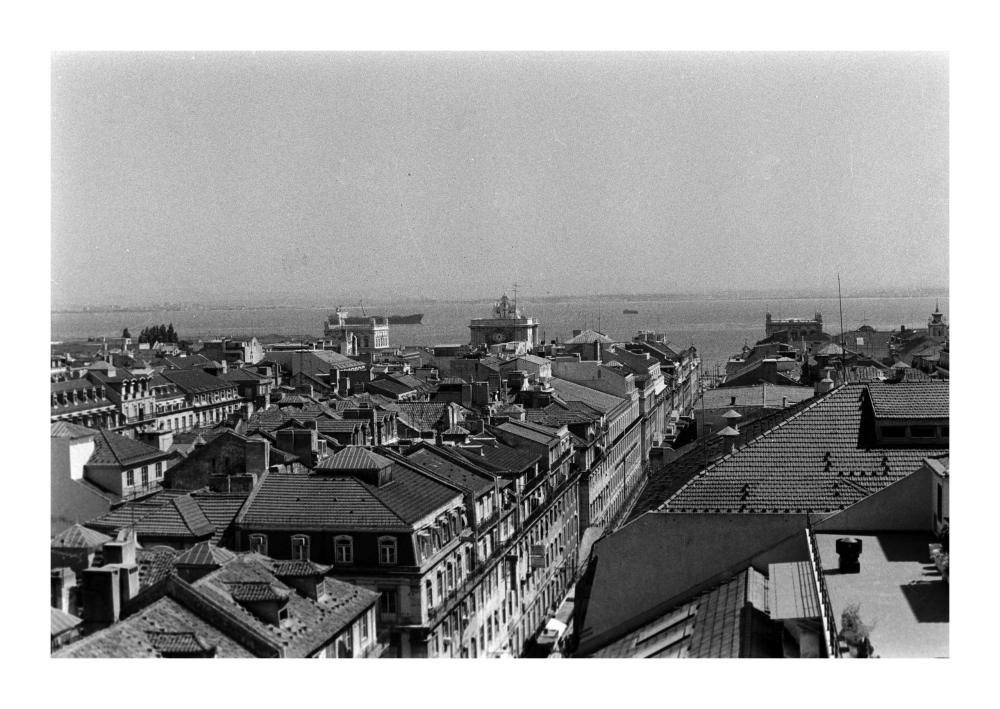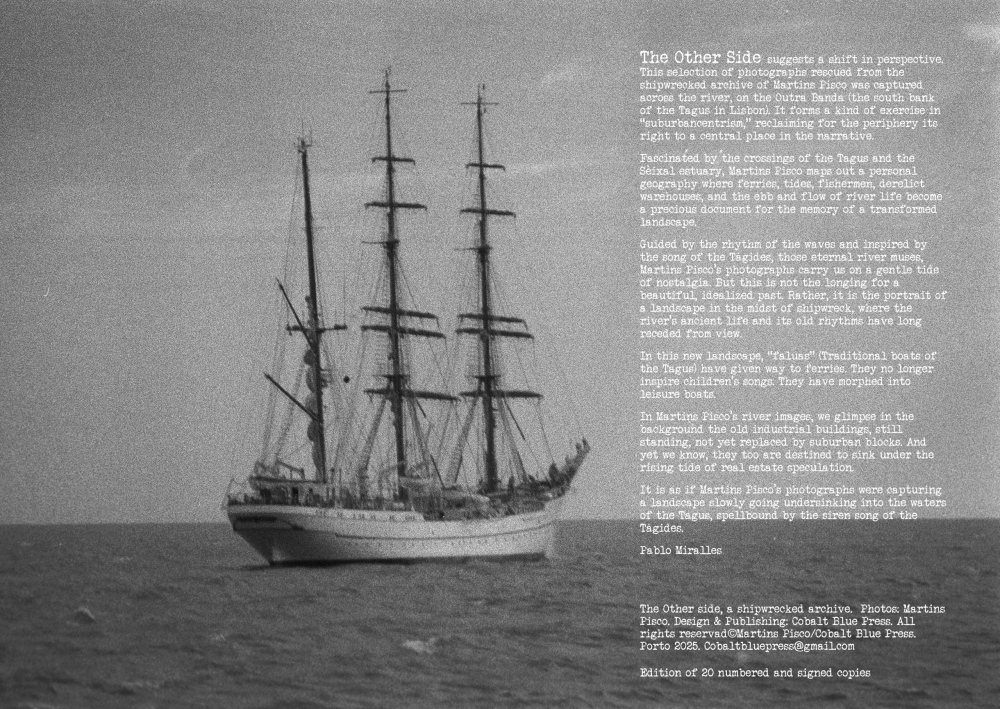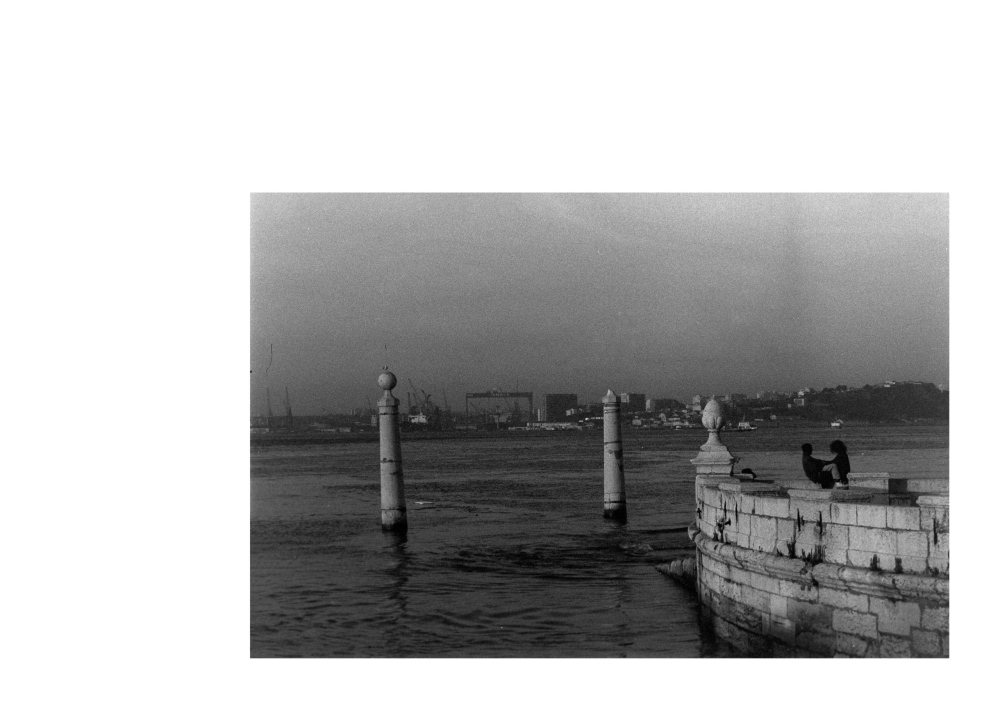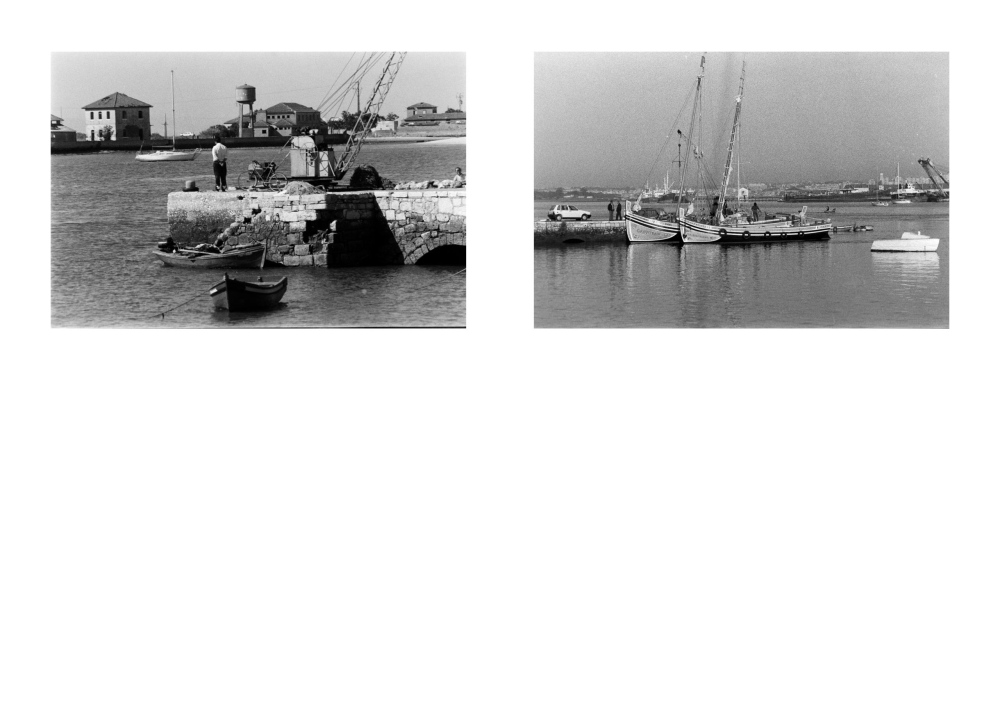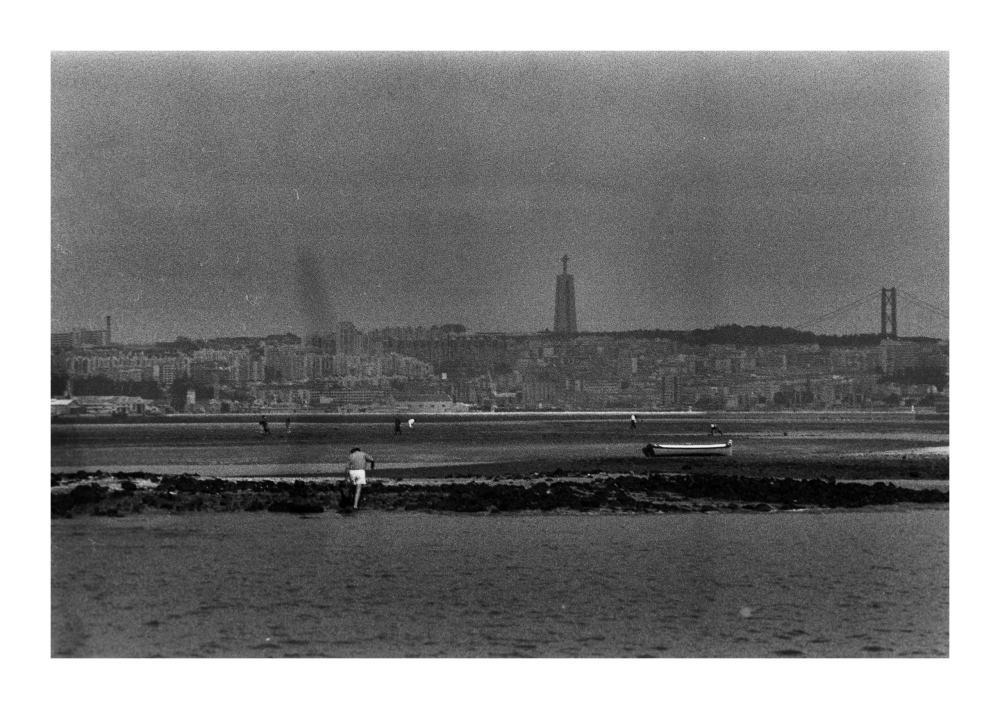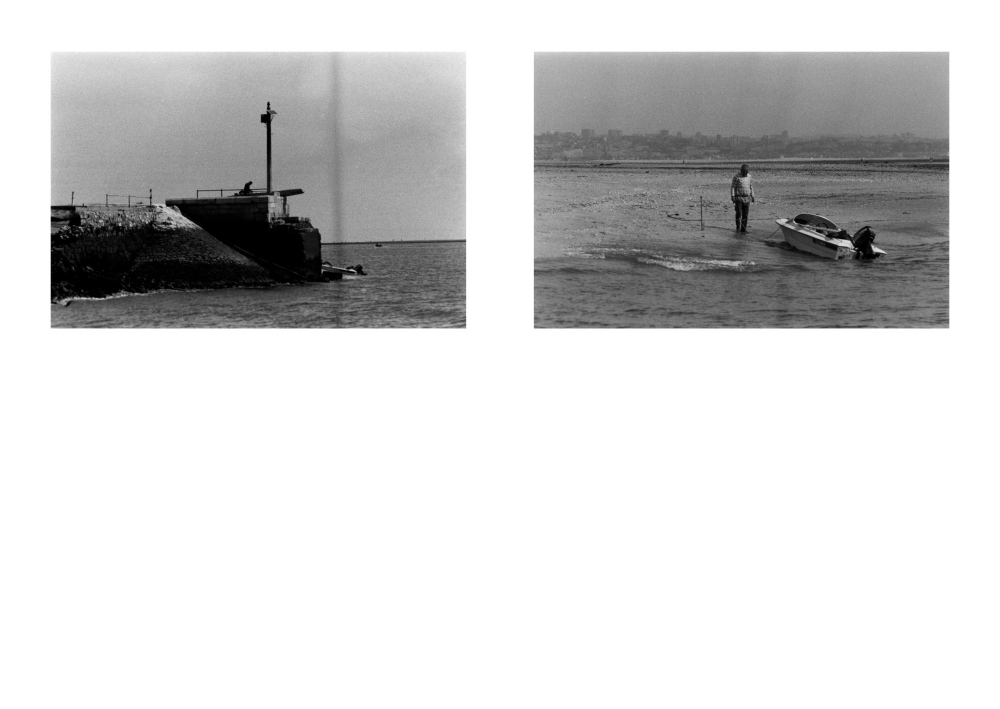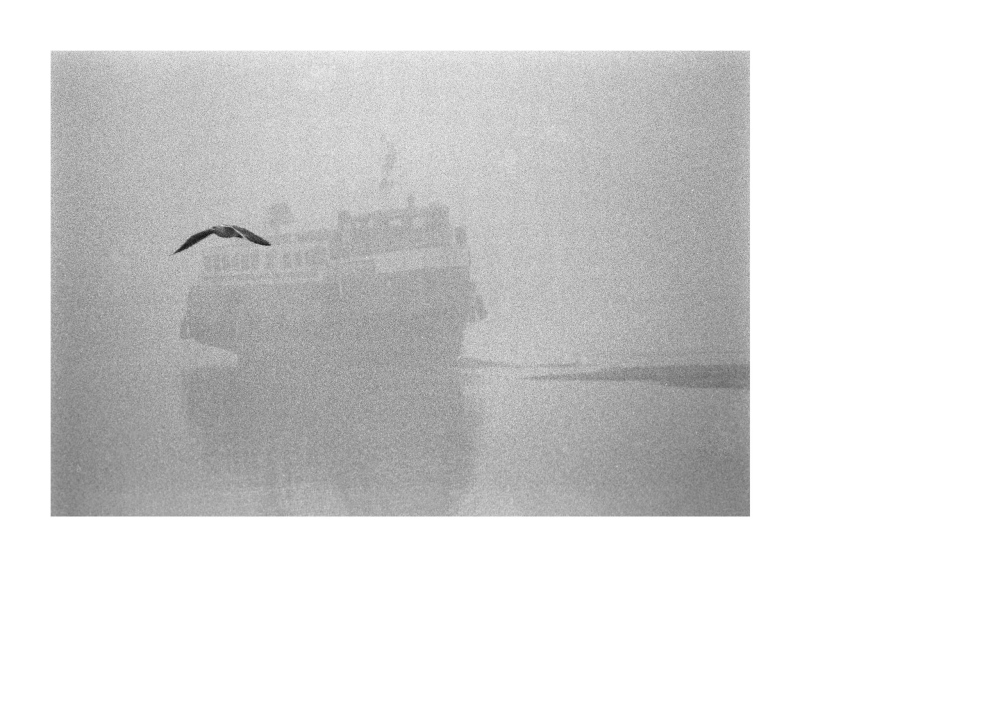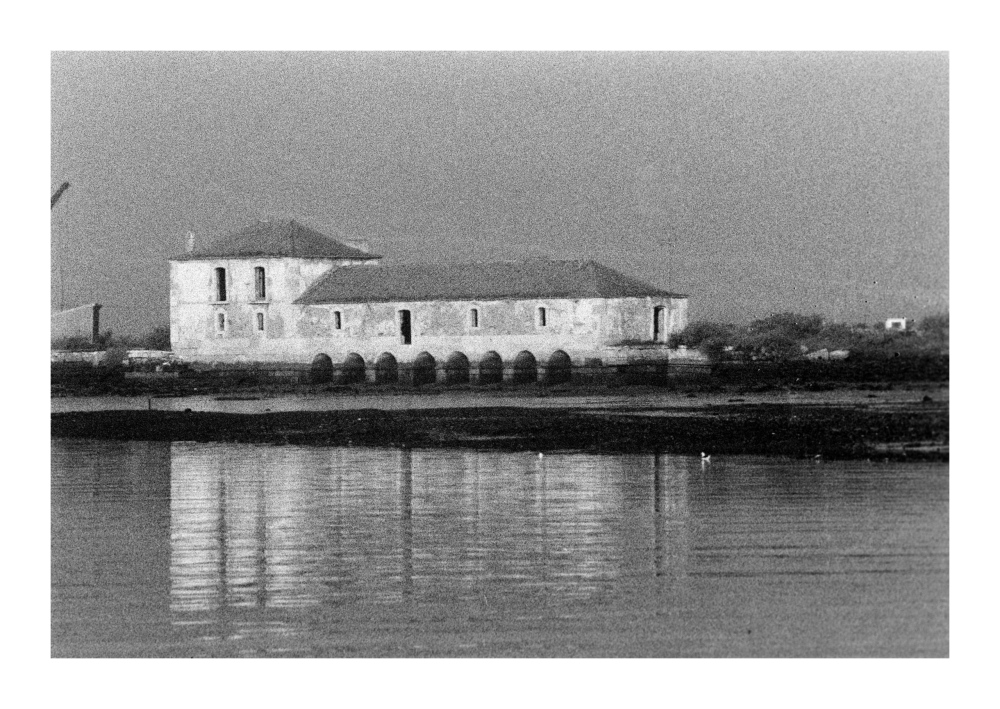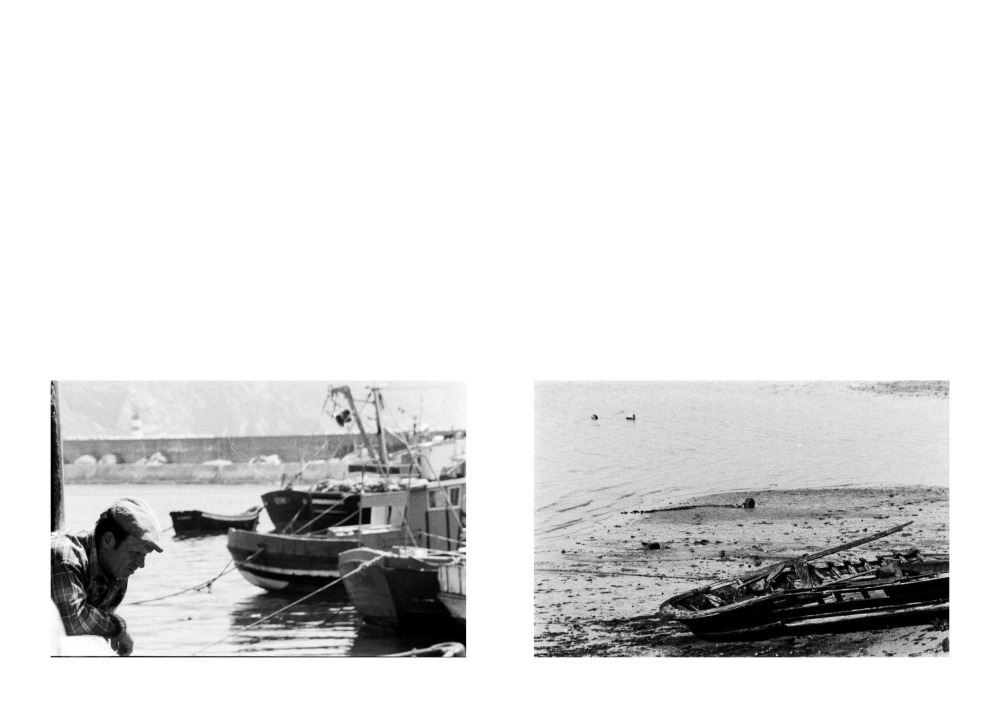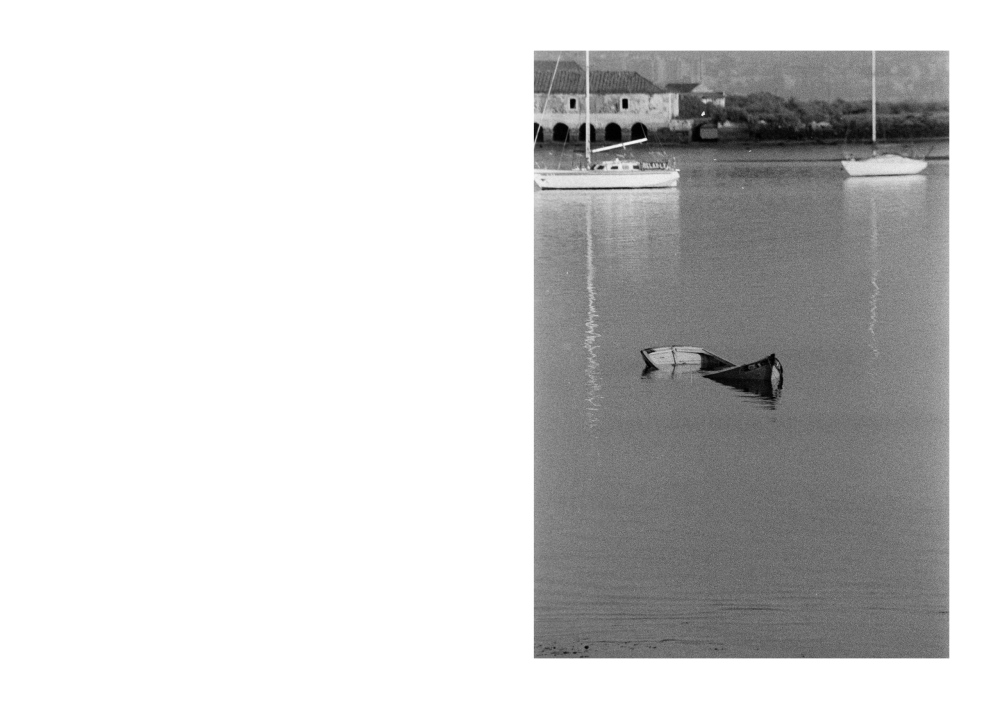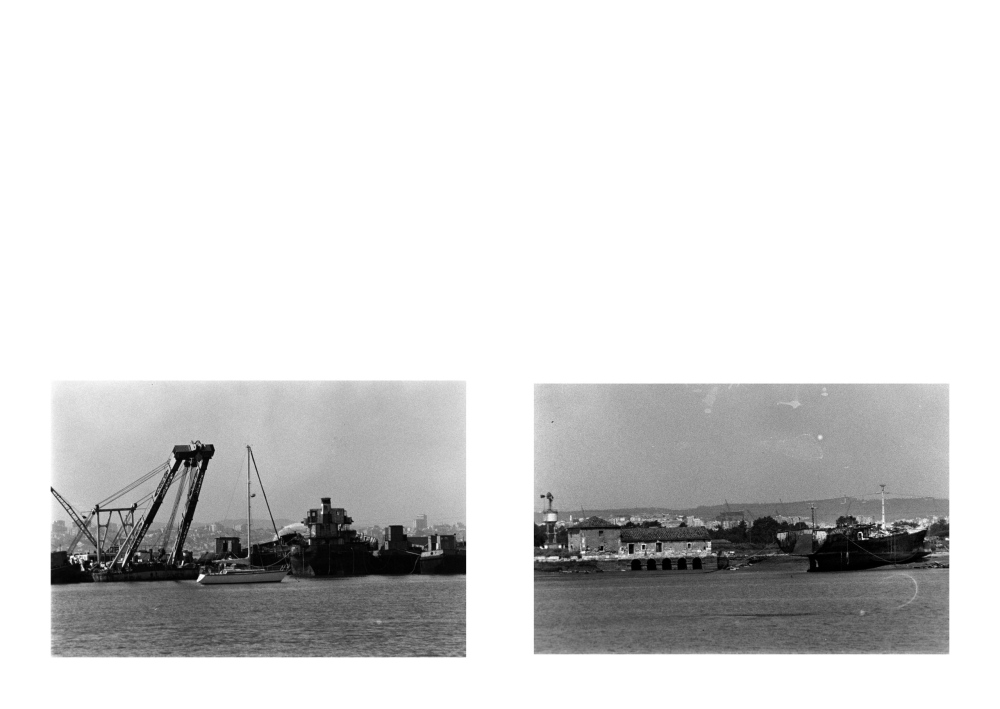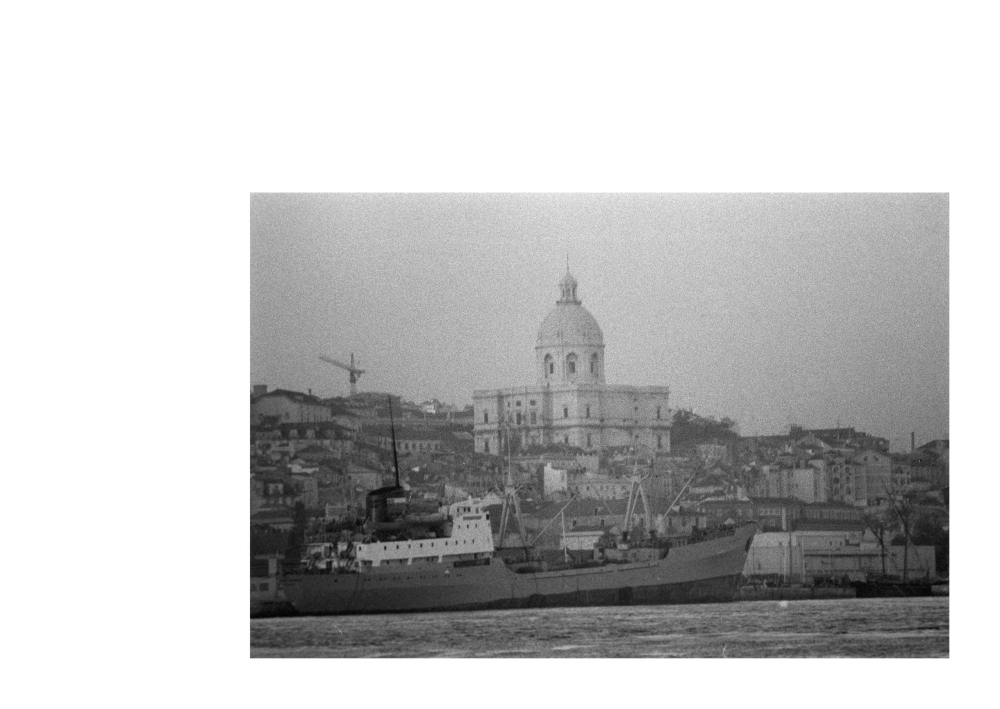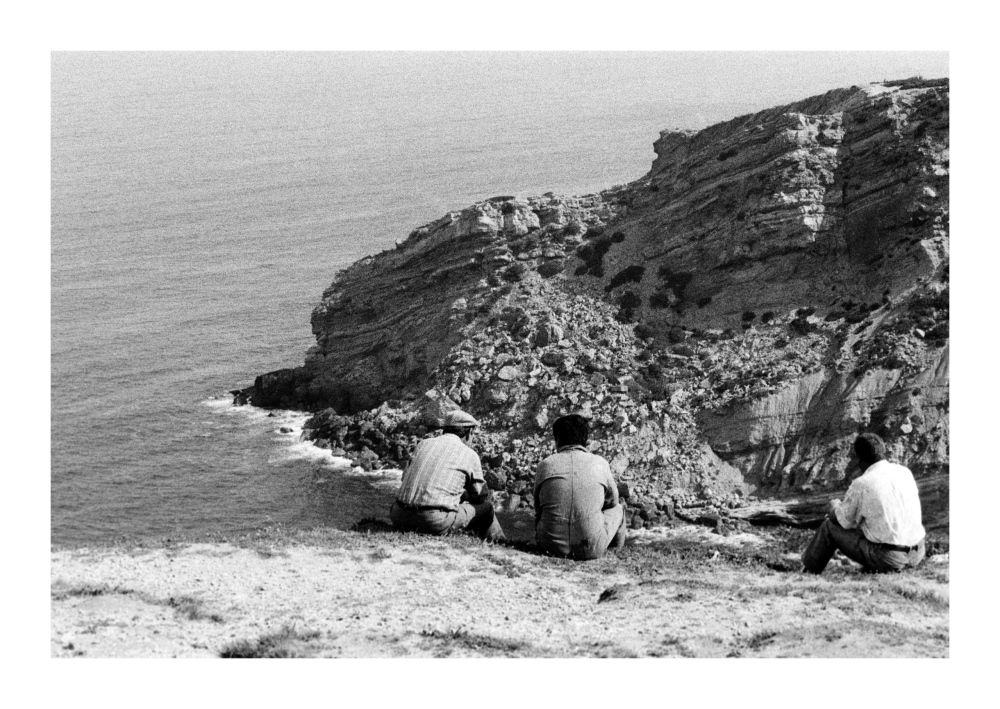-
-
The Other Side suggests a shift in perspective.
This selection of photographs—rescued from the shipwrecked archive of Miguel Martins Pisco—was captured across the river, on the Other Shore (the south bank of the Tagus in Lisbon). It forms a kind of exercise in “suburbanocentrism,” reclaiming for the periphery its right to a central place in the narrative.Fascinated by the crossings of the Tagus and the Seixal estuary, Martins Pisco maps out a personal geography where ferries, tides, fishermen, derelict warehouses, and the ebb and flow of river life become a precious document for the memory of a transformed landscape.
Guided by the rhythm of the waves and inspired by the song of the Tágides, those eternal river muses, Martins Pisco’s photographs carry us on a gentle tide of nostalgia. But this is not the longing for a beautiful, idealized past. Rather, it is the portrait of a landscape in the midst of shipwreck, where the river's ancient life and its old rhythms have long receded from view.
In this new landscape, faluas have given way to ferries. They no longer inspire children's songs. They have morphed into leisure boats.
In Martins Pisco’s river images, we glimpse in the background the old industrial buildings still standing, not yet replaced by suburban blocks. And yet we know they, too, are destined to sink under the rising tide of real estate speculation.
It is as if LuísMartins Pisco's photographs were capturing a landscape slowly going undersinking into the waters of the Tagus, spellbound by the siren song of the Tágides.
